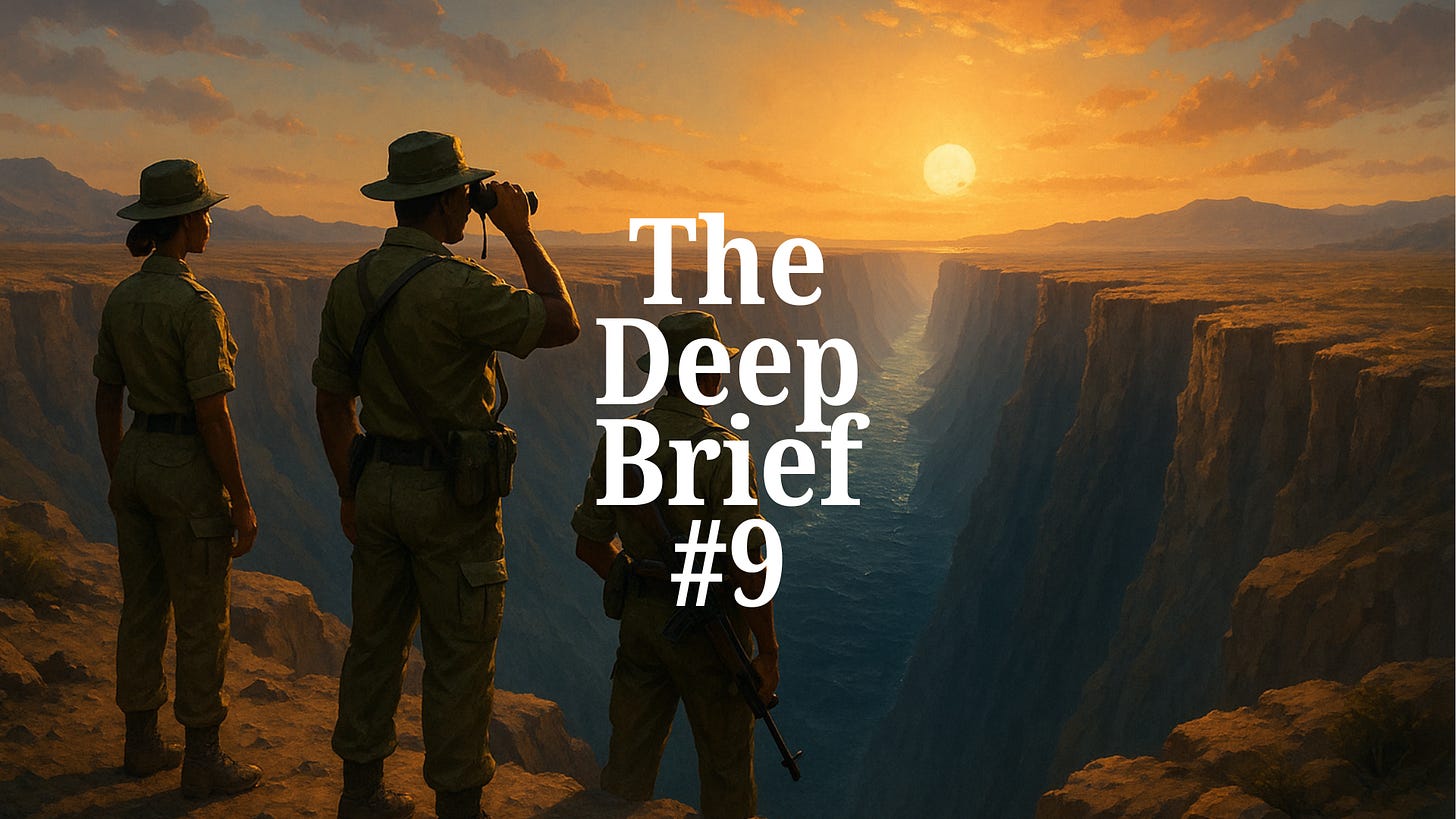The Deep Brief #9 | Friday 1st August 2025
Your end-of-week ocean intelligence, built to inform, agitate, and equip you.
Each week, I scan global headlines, frontline campaigns, and scientific papers to bring you the most urgent, overlooked, or powerful stories shaping our relationship with the sea. It is unfiltered, sometimes uncomfortable, but most definitely unmissable.
Three deep dives. Three quick hits. One hard truth from the sea.
Deep Dives
1. Deepest known ocean life discovered under chemical-crusted rock
Marine scientists lifted a rock 8,336 metres deep in the Izu-Ogasawara Trench. What they found underneath defied expectations: a thriving colony of life feeding off hydrogen and methane. This is now the deepest known animal community on Earth. It is a glimpse into how life might exist in other extreme environments, and how little we still know about our own.
Read the discovery
2. Europe moves to protect its ocean data sovereignty
After US budget cuts threaten access to shared ocean data, Europe is stepping up. EU scientists and policymakers are pushing for greater scientific independence to ensure uninterrupted climate monitoring and maritime research. As oceans change faster than predicted, control over the data becomes a geopolitical and environmental necessity.
Read the full story
3. Could ocean microbes help us fight cancer?
Last month, scientists revealed that a sticky molecule from a deep-sea bacterium can trigger cancer cell pyroptosis, a kind of programmed explosion. Known as EPS3.9, the sugar molecule doesn’t just kill tumours. It sounds the alarm. This research could open doors to new immunotherapies, and shows once again that marine life is not just mysterious, it may be medicinal.
Explore the ocean’s secret weapon
Quick Hits
A strange, shifting giant was found on the seafloor
Scientists uncovered a 2-metre-wide colonial animal under a single rock. It moved. It fed. It left trails behind.
Read the report
New neuroscience paper links ocean exposure to cognitive longevity
Blue spaces may slow brain ageing. A new review connects time in marine environments with increased resilience against neurological decline.
See the science
To save the sea, look inland
An Oceanographic Magazine feature explores how deforestation, agriculture, and land use are quietly shaping ocean health.
Read the land-to-sea story
One Hard Truth
We protect what we see. The ocean is mostly invisible.
Kenya’s marine rangers are trained, disciplined, and brave. They protect manatees, reef systems, and turtles. They intervene when fishers encroach on breeding grounds. They show that ocean protection is not a vague ideal. It is an act of daily vigilance.
Yet most coastlines have no rangers. Most coral reefs are unguarded. Most marine laws are underfunded or unenforced. The people risking their lives for the ocean are few, and often unsupported.
This is not about Kenya. It is about whether we are willing to build a future where ocean guardians are everywhere, not the exception.
Final Thought
This week, life emerged from the deepest trench. A colonial creature shifted beneath stone. A sugar molecule erupted cancer cells. Rangers stood watch along Kenya’s coast. Each story felt like a glimpse behind the curtain, proof that the ocean is not a void, but a force.
Yet even now, the ocean remains invisible in most decision rooms. It is a distant blue blur in memory and media. But it is not distant. It breathes for us. It heals us. It feeds us. Its microbes may one day save us.
To protect it, we must look harder, listen deeper and build systems that reward guardianship, not just extraction.
If this newsletter helps you see the ocean more clearly, please share it or consider upgrading to a paid subscription.
See you next week.
– Luke



